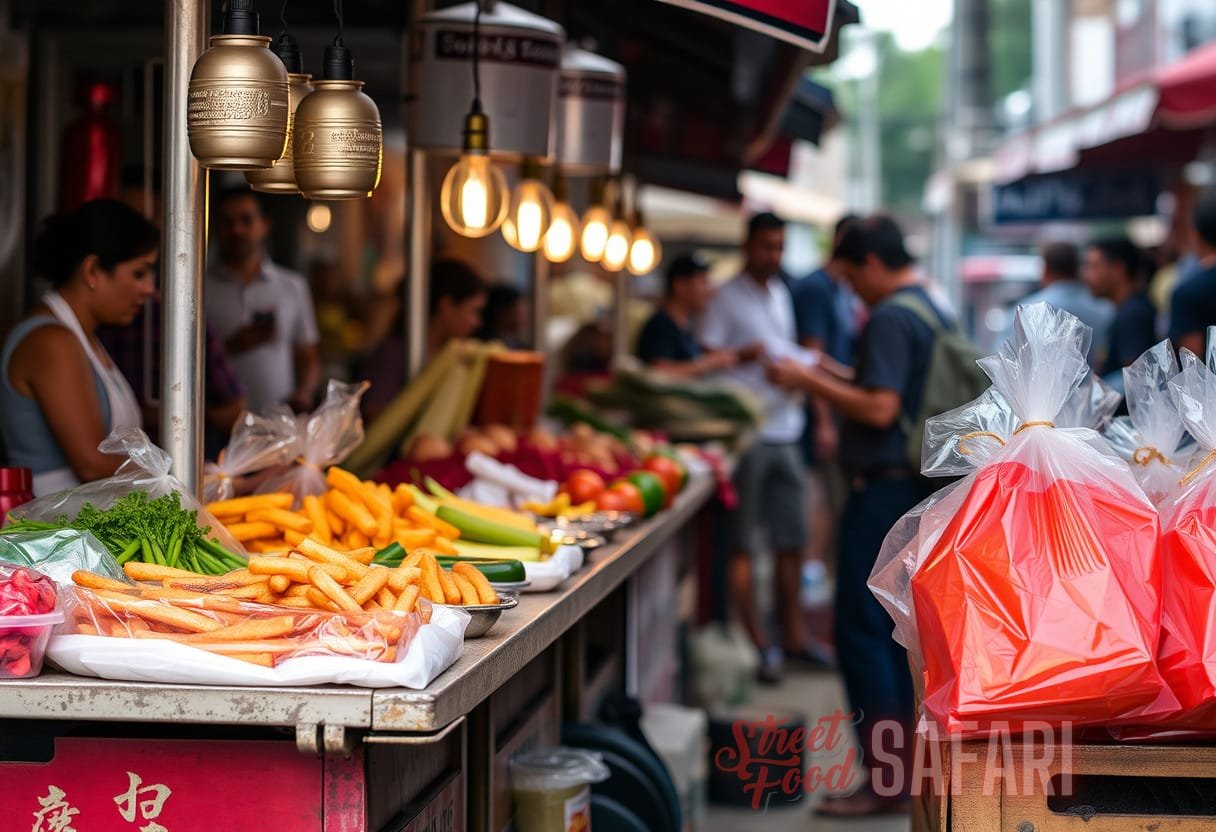Culinary Fusion: Unraveling the Intricate Tapestry of Global Street Food Culture
Food has always been a powerful tool for bringing people together, transcending boundaries of language and culture. The phenomenon of global street food is a testament to the way in which culinary traditions and flavors have evolved and merged over centuries, creating a rich and diverse tapestry of flavors and techniques. In this article, we will explore the concept of culinary fusion, focusing on the global street food culture that has emerged as a result.
The Origins of Global Street Food
Street food has a long and storied history, dating back to ancient civilizations when food vendors would set up stalls in bustling marketplaces to cater to the hungry masses. This tradition has persisted throughout the ages, adapting and evolving to reflect the changing tastes and preferences of different cultures.
As trade routes opened up and explorers set sail to discover new lands, the exchange of goods and ideas sparked a revolution in the world of street food. Flavors and cooking techniques from different regions began to intertwine, giving birth to new dishes and culinary traditions.
One example of this early global culinary fusion is the humble falafel. Thought to have originated in ancient Egypt, this deep-fried ball of ground chickpeas or fava beans has become a staple street food across the Middle East and beyond. Influences from neighboring cultures, such as the Persians and Turks, have shaped the way falafel is prepared and served, resulting in a unique and delicious fusion of flavors.
The Rise of Food Trucks and Pop-Up Stalls
In recent decades, the global street food scene has seen a resurgence in popularity, driven in part by the rise of food trucks and pop-up stalls. These mobile culinary enterprises have taken the world by storm, offering a wide range of international flavors and culinary fusions.
Food trucks, in particular, have become a symbol of the vibrant and dynamic nature of global street food culture. These mobile kitchens allow chefs to experiment with different flavors and cuisines, often resulting in innovative and exciting culinary creations.
From the Korean-Mexican fusion of Korean tacos to the Indian-inspired flavors of butter chicken poutine, food trucks have become a breeding ground for culinary experimentation and cross-cultural pollination.
Global Street Food: A Cultural Bridge
At its core, global street food is more than just a delicious meal. It serves as a cultural bridge, connecting people from different backgrounds and providing a glimpse into the culinary traditions and flavors of faraway lands.
The vibrant street food markets of Southeast Asia, for example, are a melting pot of flavors and cultures. Visitors can explore a variety of dishes, from the spicy and aromatic curries of Thailand to the rich and flavorful satay skewers of Indonesia. These markets are a celebration of diversity and a testament to the power of food to bring people together.
One need only look to the success of street food festivals and events around the world to see the impact of global street food on popular culture. These gatherings attract food enthusiasts from all walks of life, eager to sample the latest culinary creations and experience the vibrant atmosphere of street food culture.
Challenges and Controversies
While global street food has gained widespread acclaim and popularity, it is not without its challenges and controversies.
One of the main concerns associated with street food is food safety. Since most street vendors operate without the stringent regulations and oversight imposed on brick-and-mortar restaurants, there is a higher risk of foodborne illnesses. However, it is important to note that the majority of street food vendors take great care to ensure the safety and quality of their products.

Another issue that has arisen in recent years is cultural appropriation. As culinary fusions become more widespread, there is a fine line between appreciation and appropriation. It is crucial to recognize and respect the cultural origins of these dishes and give credit where it is due.
The Influence of Global Street Food on Fine Dining
Global street food has not only had an impact on casual dining and food trucks, but it has also made its mark on the fine dining scene. Many world-renowned chefs have drawn inspiration from street food flavors and techniques, incorporating them into their menus to create unique and innovative dishes.
The rise of fusion cuisine is a direct result of the influence of global street food. Chefs are increasingly blending traditional flavors and ingredients from different cultures, creating exciting and unexpected combinations that challenge the boundaries of culinary traditions.
Restaurants like Noma in Copenhagen, Denmark, led by renowned chef René Redzepi, have gained international acclaim for their inventive use of local and global ingredients. By fusing traditional Nordic cuisine with flavors and techniques from around the world, Noma has become a pioneer in the world of modern gastronomy.
Other fine dining establishments, such as Gaggan in Bangkok, Thailand, and Pujol in Mexico City, Mexico, have also embraced the global street food movement, infusing their menus with bold and vibrant flavors.
Exploring the Future of Global Street Food
The future of global street food looks bright, with continued innovation and cross-cultural exchanges on the horizon.
Technology is playing a significant role in shaping the future of street food. Mobile apps and online platforms are making it easier than ever for food enthusiasts to discover and connect with street food vendors around the world. These platforms also provide an opportunity for vendors to showcase their culinary creations and expand their reach beyond their local communities.
The growing awareness of sustainability and ethical sourcing is also influencing the world of street food. Locally sourced ingredients and eco-friendly practices are becoming more prevalent, as consumers seek out vendors who prioritize environmental responsibility.
As global travel becomes more accessible, and people become increasingly adventurous with their palates, global street food will continue to evolve and captivate taste buds around the world.
Conclusion
Global street food is a testament to the way in which culinary traditions and flavors have merged and evolved over time. From the bustling street markets of Southeast Asia to the innovative food trucks of North America, the global street food culture is a celebration of diversity and a reflection of our shared human experience.
Through culinary fusion, we have the opportunity to explore new flavors, bridge cultural divides, and create a more interconnected world. So next time you find yourself wandering the streets of a foreign city, be sure to stop by a street food vendor and unravel the intricate tapestry of global street food culture.


